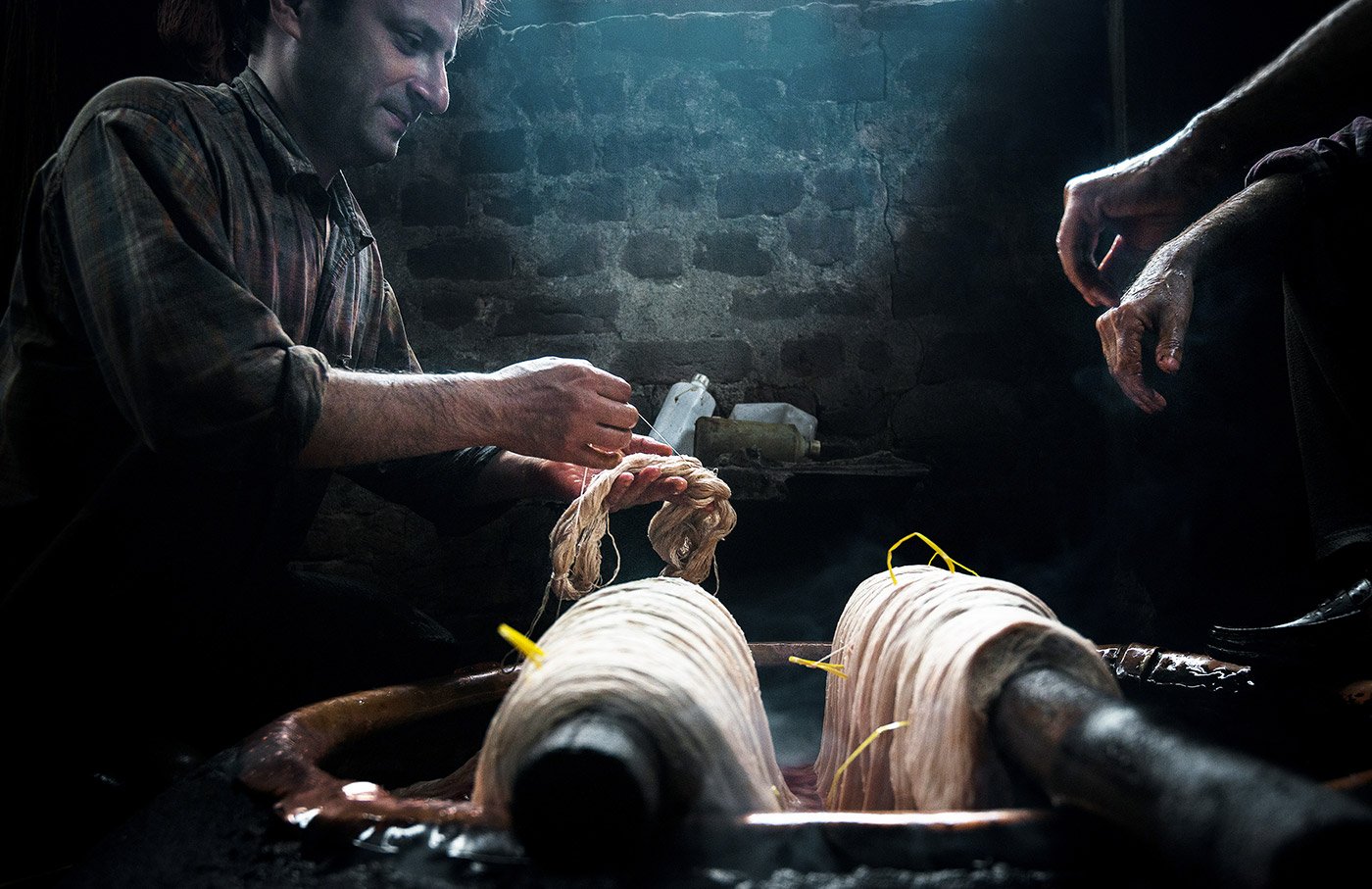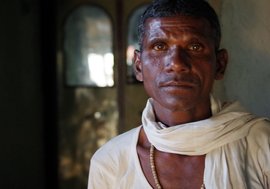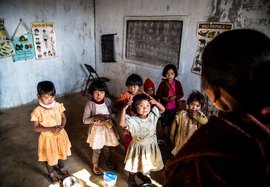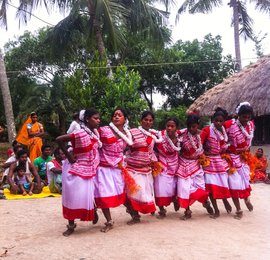Master dyer Abdul Rashid’s most prized possession is a book, which has frayed from a lifetime of daily use. It’s a ‘master book of colour codes’, a reference guide he has put together, page by page, since the 1940s, when he began practising the traditional Kashmiri art of dyeing.
His workshop, Abdul Rashid & Sons, sits in a quiet bylane in old Srinagar. Rashid, over 80 years old, sits hunched in a corner, book in hand. There’s a delicate irony here – breathtaking colours have been created within this space’s dull unplastered walls.
It’s around 10:30 a.m. when the process of dyeing begins. It will take all day to dye just two bundles of silk yarn. This begins with washing the yarn, because, as Rashid says, “Dyeing will be pure only when the yarn is pure. One must first be emptied of all impurities to be filled with true beauty.”
After the washing is done, Rashid’s eldest son Naushad, around 42 – his only son who is in this trade; an older son is in the carpet business – mixes powdered beige colour in water heated in an ancient-looking copper vessel. The copper helps to make the colour permanent. The colour, bought from a local market, is sprinkled little by little, with care and precision, so that the dye mixes in the water evenly. The yarn is then wrapped around thick wooden sticks that are dipped and rolled around gently in the coloured water. This process takes hours because the yarn must soak up the dye from within.
Once the dyeing is complete, Naushad takes out a thread and dries it over the fire to see if the colour has caught on uniformly. He shows it to his father for approval. Once father and son are satisfied, the process is complete. If not, the yarn is given more time in the coloured water, more pigments or some bleach. Abdul Rashid believes that every yarn is capable of greatness.
This morning, the colour seems to have caught on perfectly, but the most important task is yet to be done. And fittingly, it’s Rashid who does it. He takes a ‘finished’ or dyed thread, pastes it on a fresh page of his revered reference guide, and writes down all the details in his wavering hand.
This is the slowly dying art of Kashmiri dyeing, practised during cold autumns, freezing winters and cool summers. When the demand is high – the customers are usually weavers of carpets and shawls, who bring the bundles of yarn to this workshop – the dyers work for 12 hours a day, and earn around Rs. 20,000-25,000 a month. But when demand falls in the summer, they only put in 10 hours.
What is constant, however, is the commitment with which Rashid, Naushad and their assistant Mushtaq go about their work. Sometimes, angry slogans jolt the lane, or curfews make it difficult to carry on. But Abdul Rashid & Sons don’t allow the unrest to interrupt their work.
The biggest challenge they face in these changing times is from mass-produced dyed yarn, which lures many shawl and carpet makers, but compromises on quality in the name of speed. Rashid says that when he started dyeing, the art form was in full bloom and countless Kashmiri families could earn their livelihoods from this work. But today, like many traditional hand-based skills, this one too is on its last legs.
“The cheap Chinese products readily available in the market have killed these family-run enterprises,” Naushad says. “I am the last generation carrying forward this business. I don’t want my children to come into this work. I want them to get out of the valley, get degrees and get white-collared jobs. This business will end with me. There’s no future in it anymore.”
Why do Rashid and his son work so painstakingly when customers rarely think of dyers when they buy shawls or carpets? Abdul Rashid squints when I ask him this question. He looks out of the window at the waning sunlight and tells me, evocatively, that nobody notices the light of the sun, but everybody is warmed by it. The day is dying, and perhaps the sun won’t rise again on the family business.
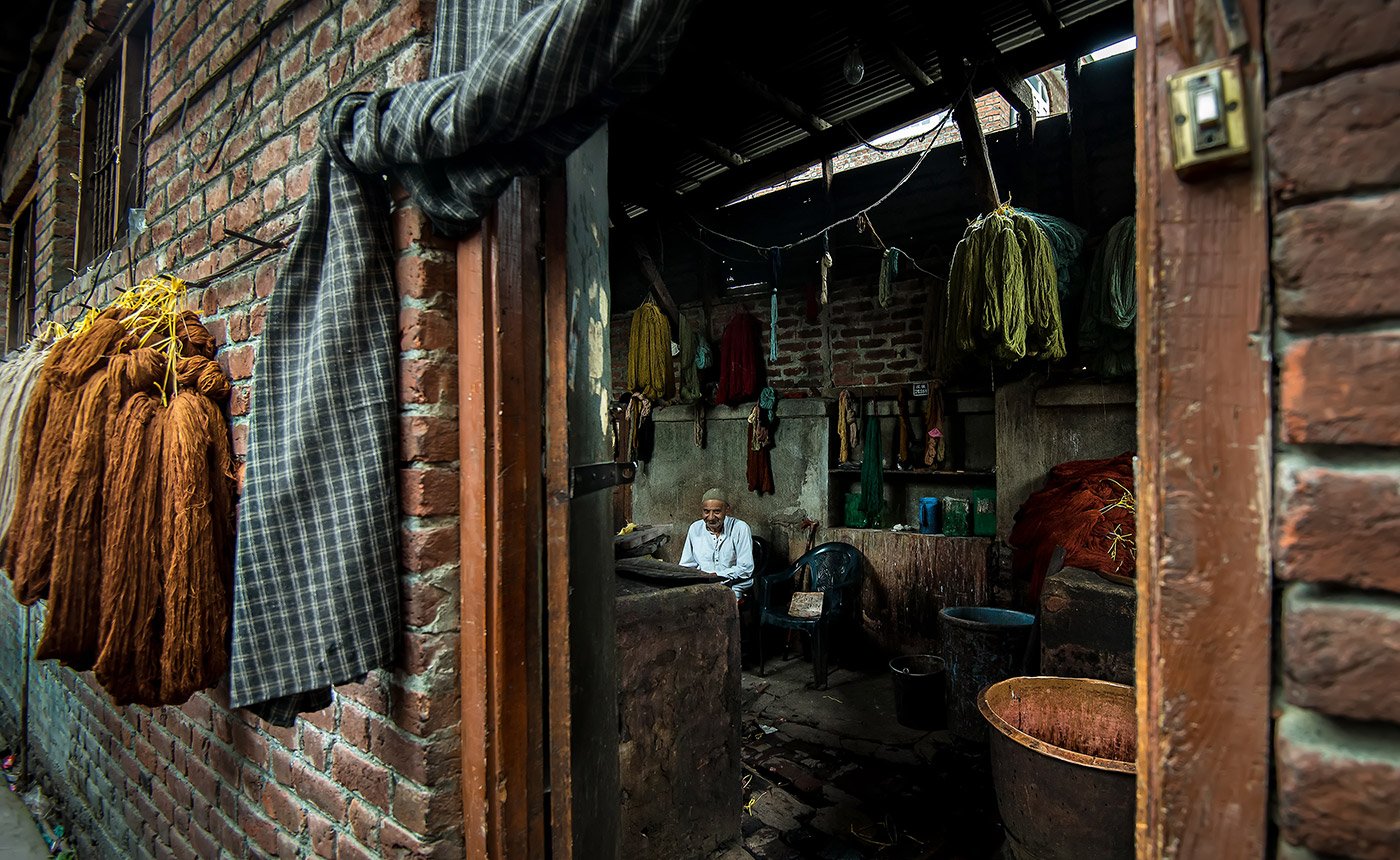
Abdul Rashid & Sons was set up in 1942 in a bylane in old Srinagar.
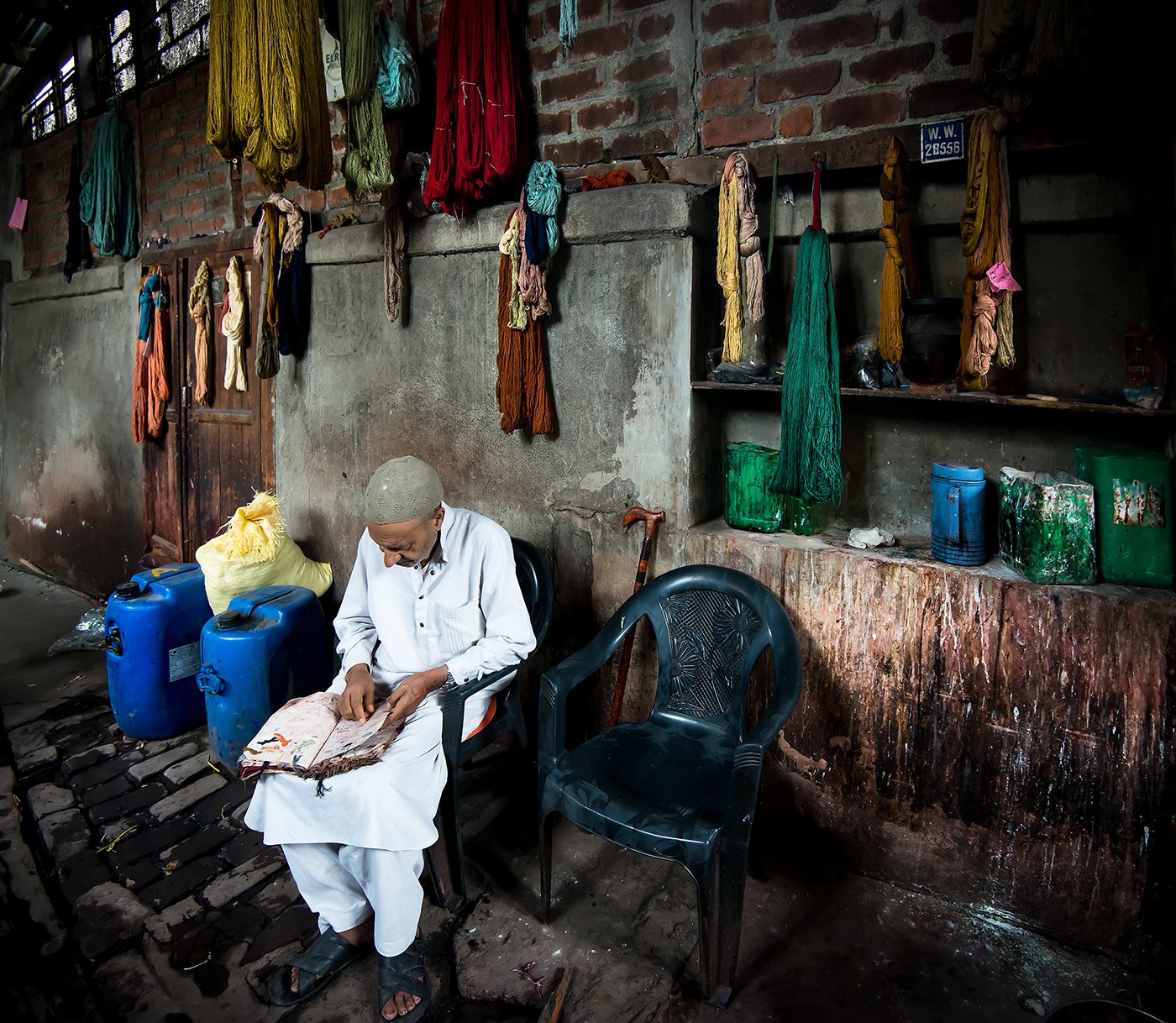
Master dyer Abdul Rashid, who at over 80 works slowly, shows us his ‘master book of colour codes’, which he has painstakingly compiled over seven decades.
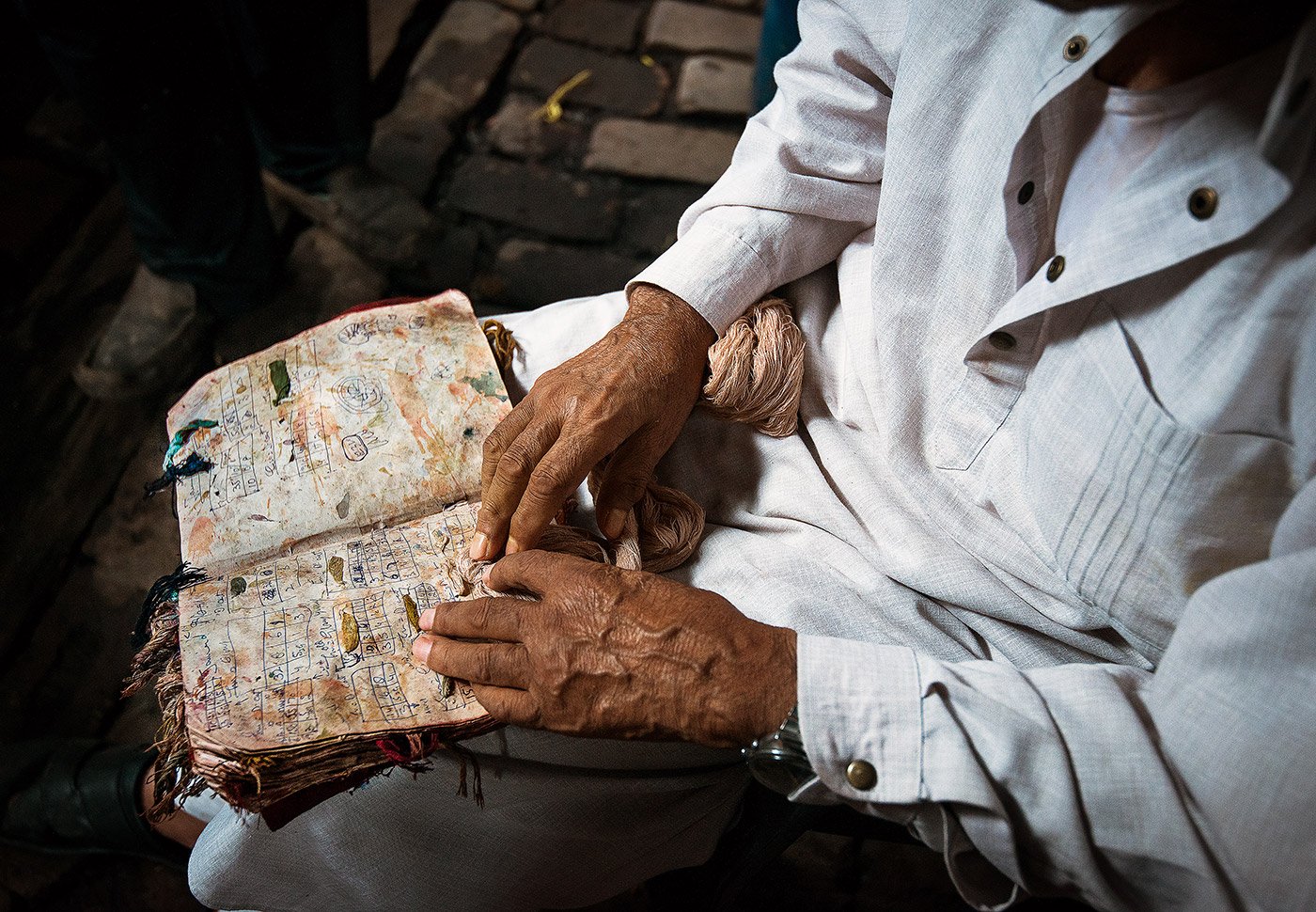
The ‘master book’ contains a storehouse of information about dyeing, including details about the colours, their components and how to make them. The book even has strands of dyed yarn as samples.
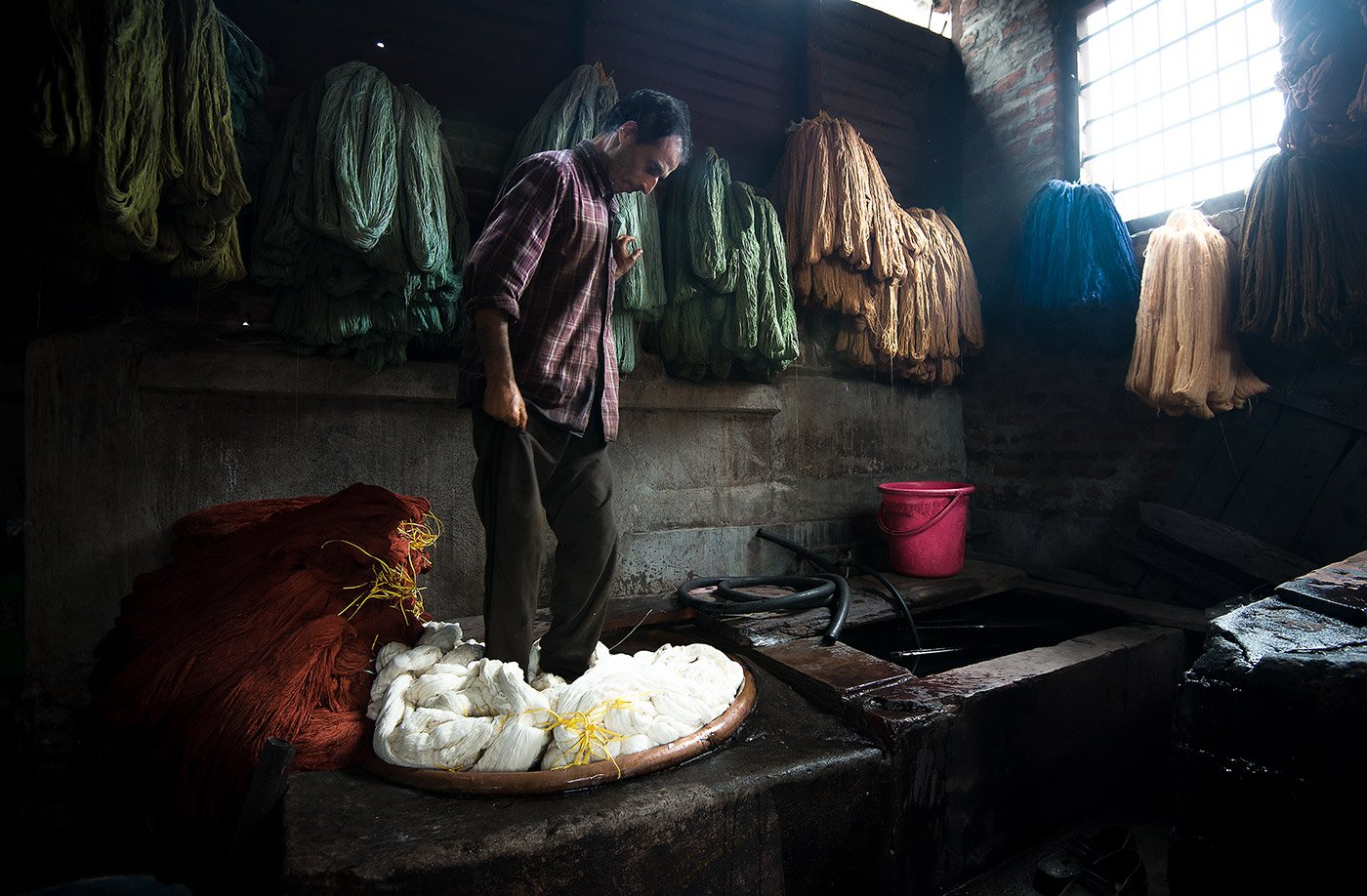
Their assistant Mushtaq fills a large copper vessel with fresh water to wash the yarn before the dyeing begins, and ensures it is properly immersed and soaked.
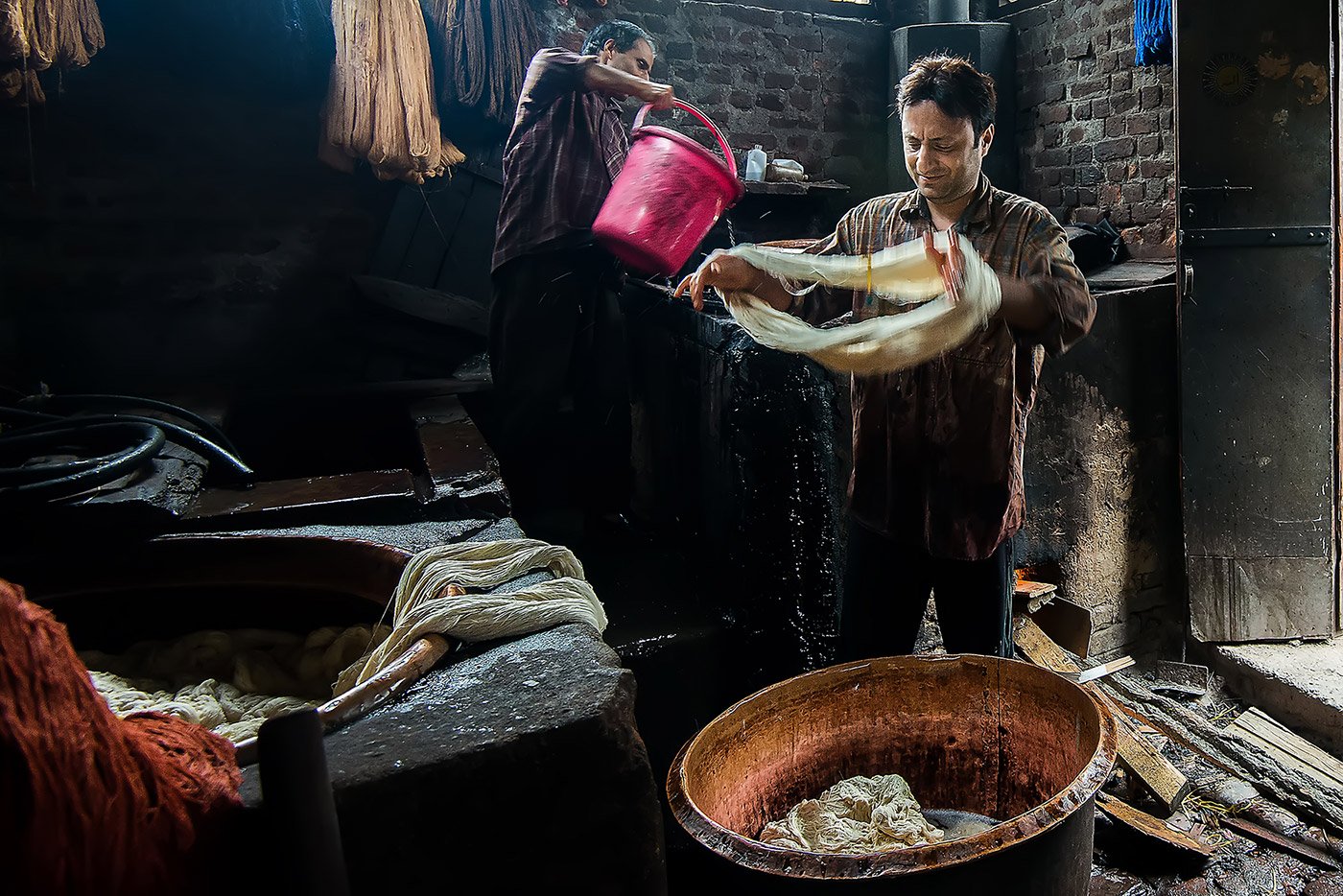
Aftern a while, Rashid's son Naushad takes out the washed yarn from the vessel, while another is filled with water and heated over a fire.
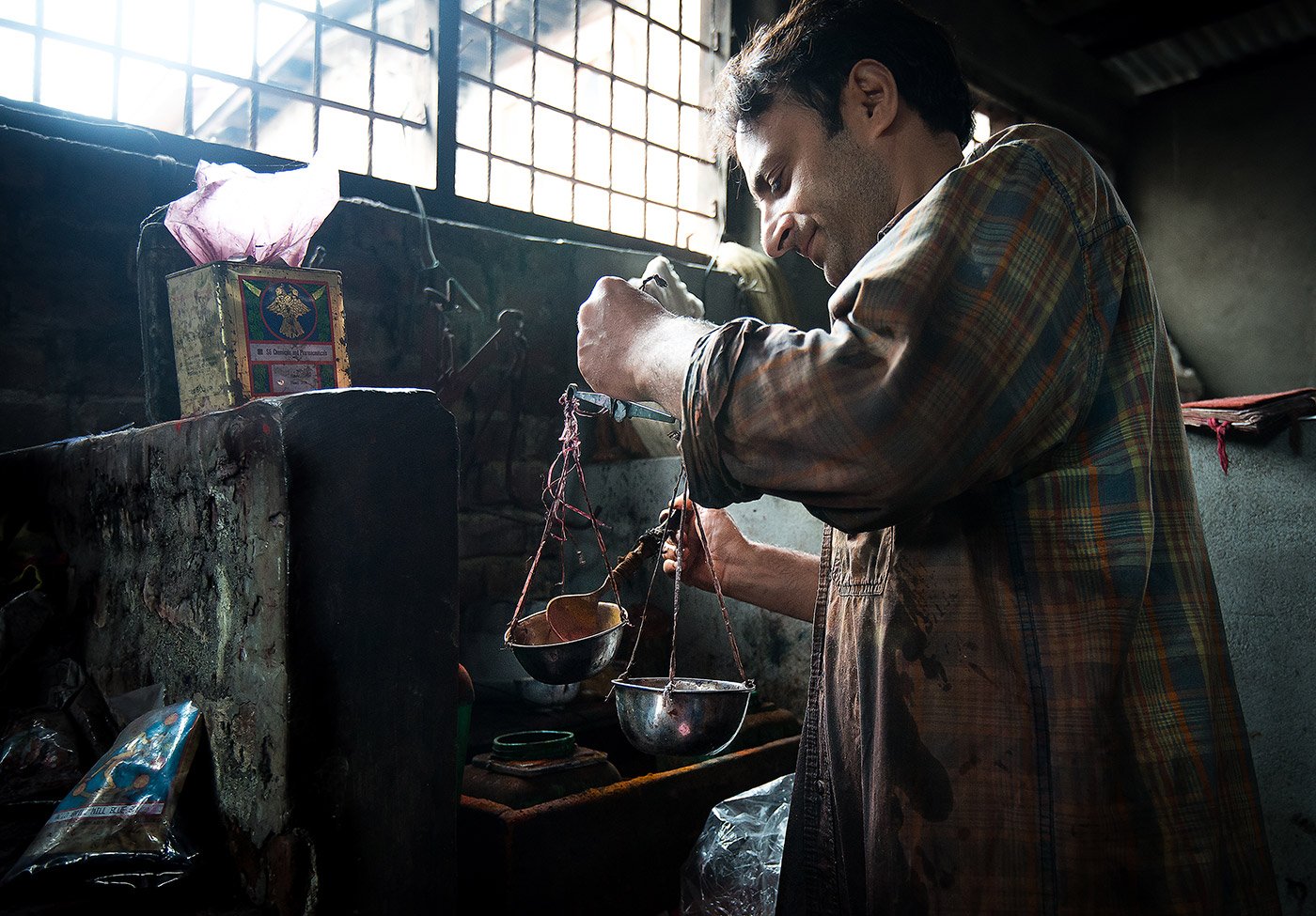
Naushad measures the powdered colour based on the information written down by his father in the ‘master book of colour codes’.
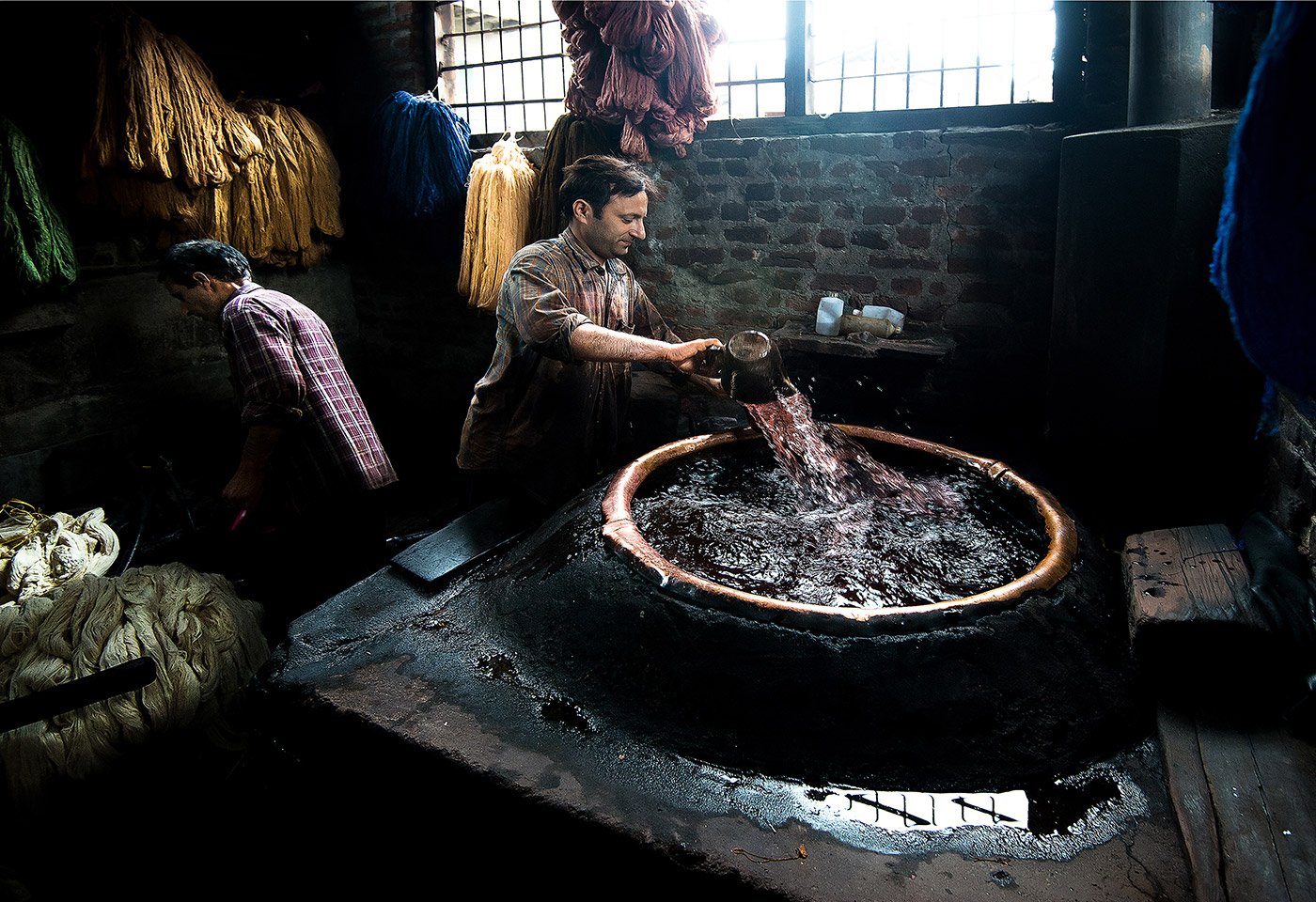
The dry, powdered colour is then mixed in with the heated water.
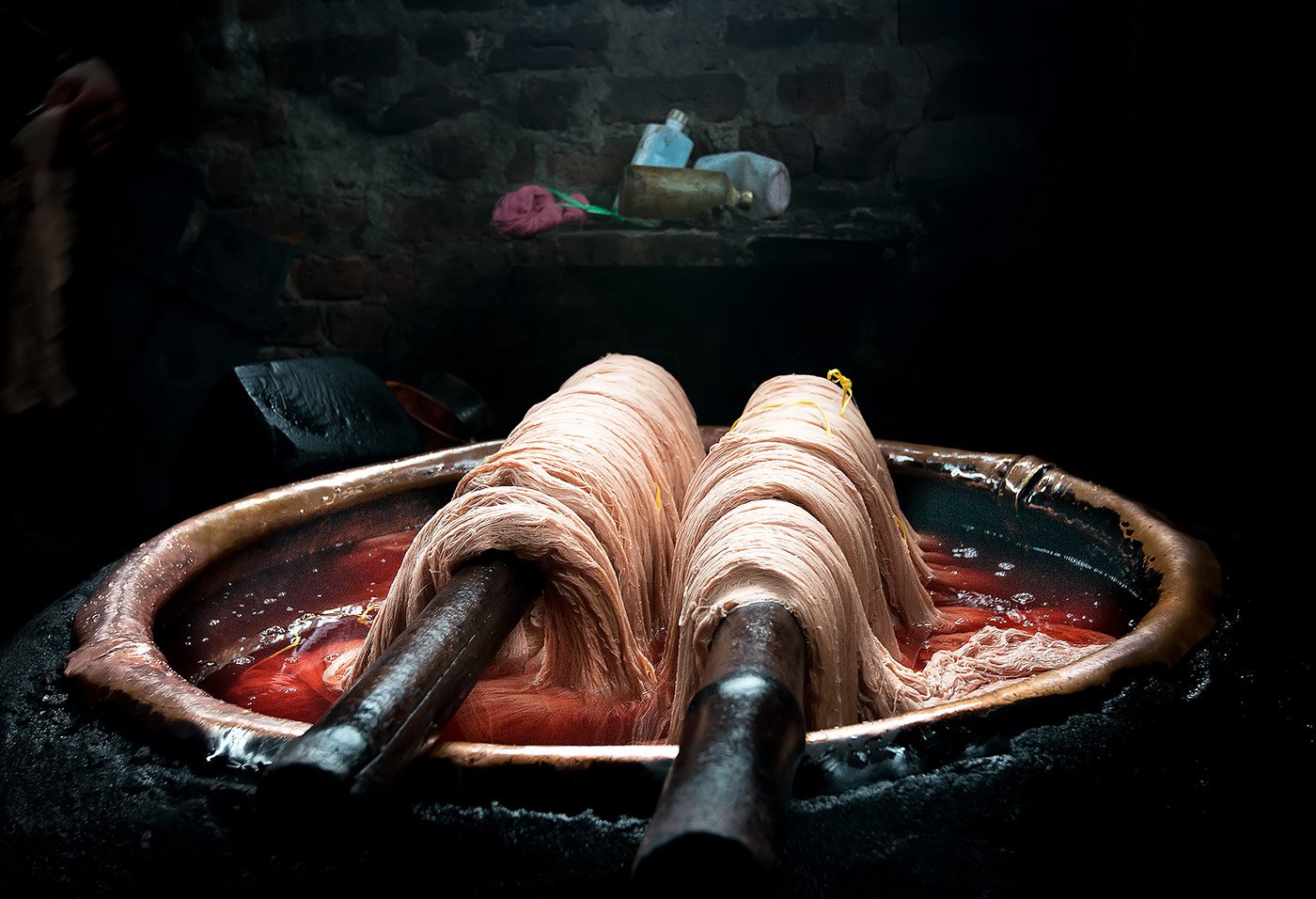
The yarn sits in this mixture over the fire and slowly acquires colour.
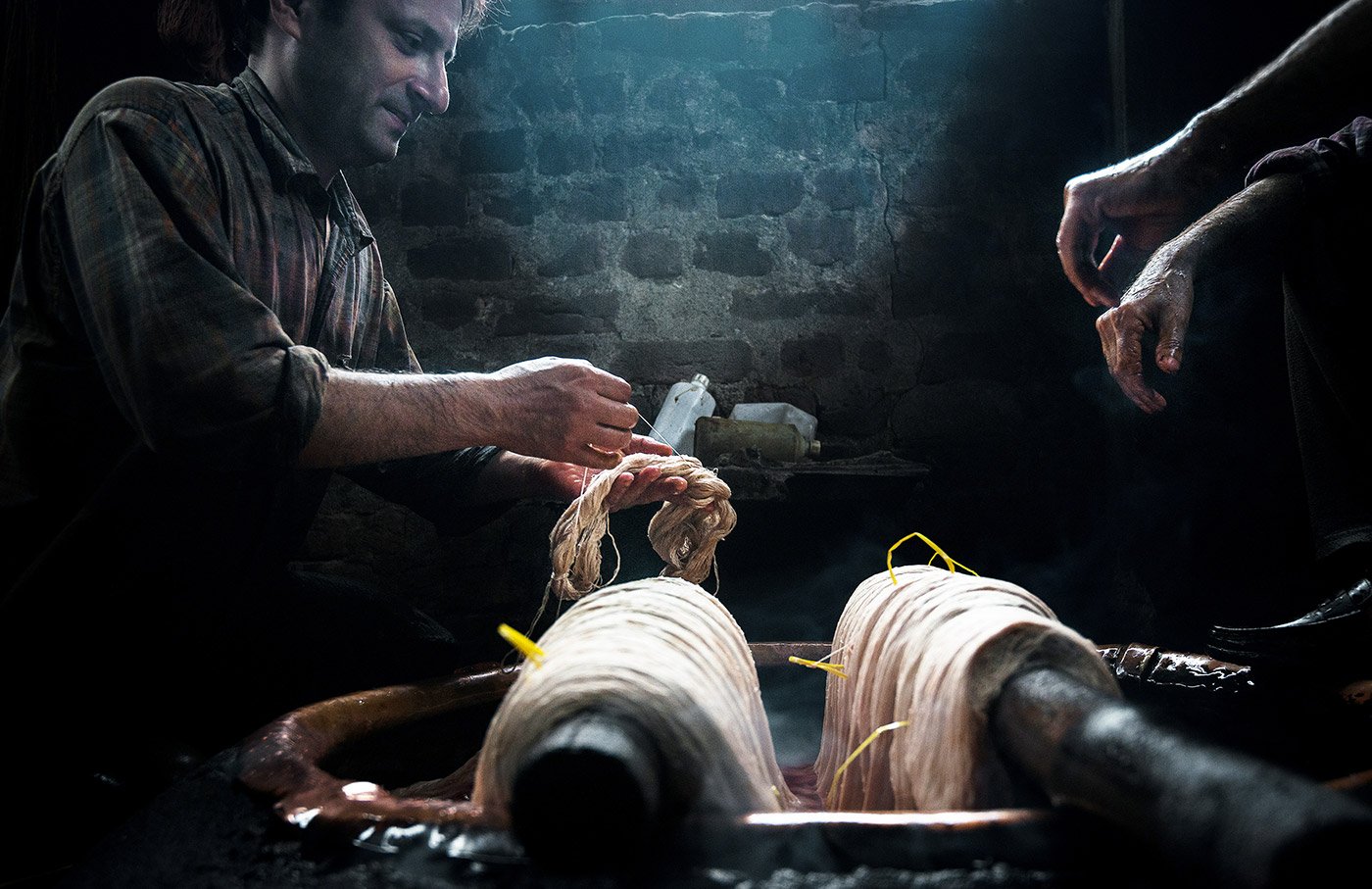
After some time – between 20 minutes to more than an hour, depending on how long it will take to achieve the exact shade – when the yarn has cooled down, Naushad inspects each thread to make sure the colour has caught on evenly.
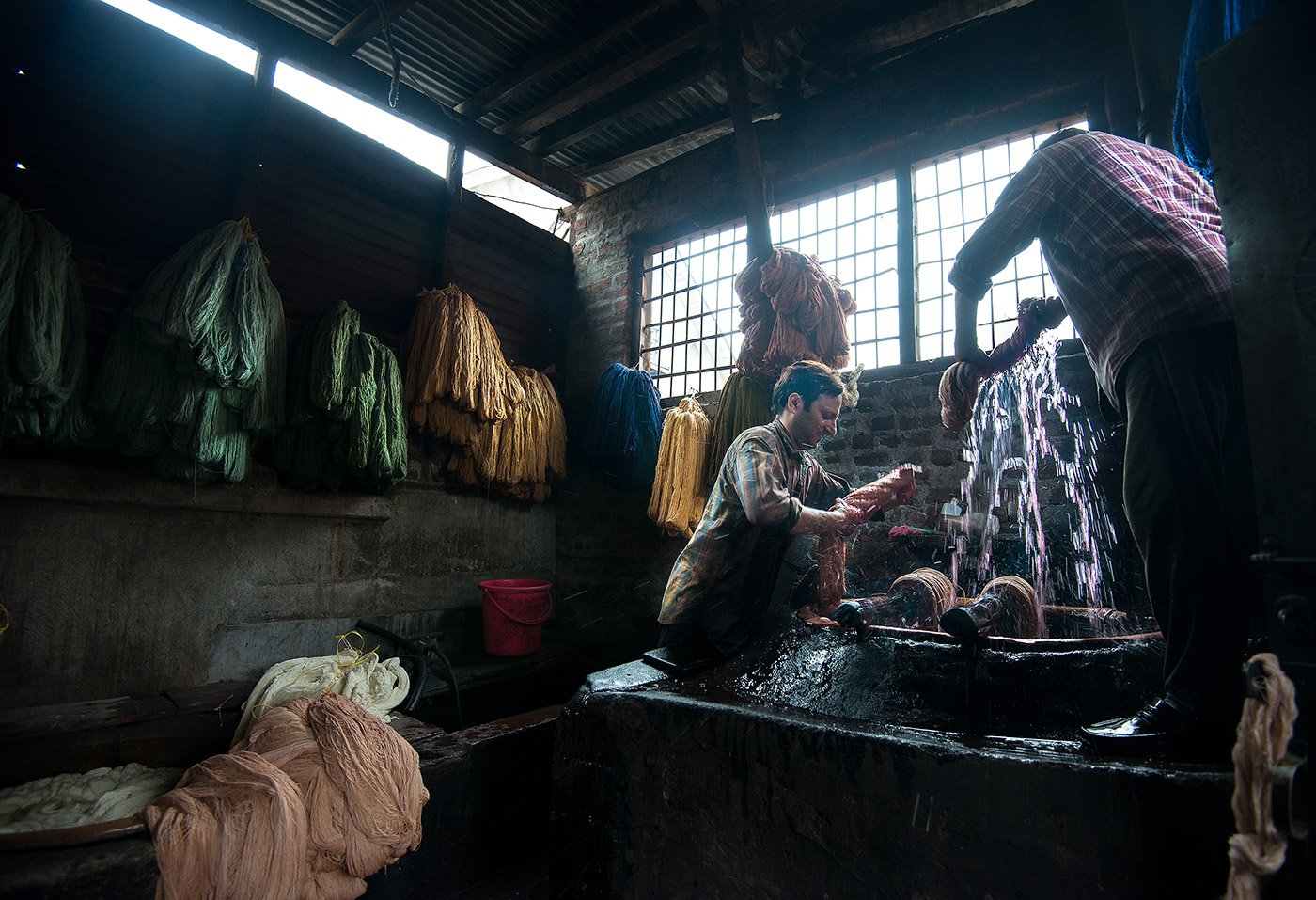
Naushad and his assistant take out the yarn and wring out the excess water.
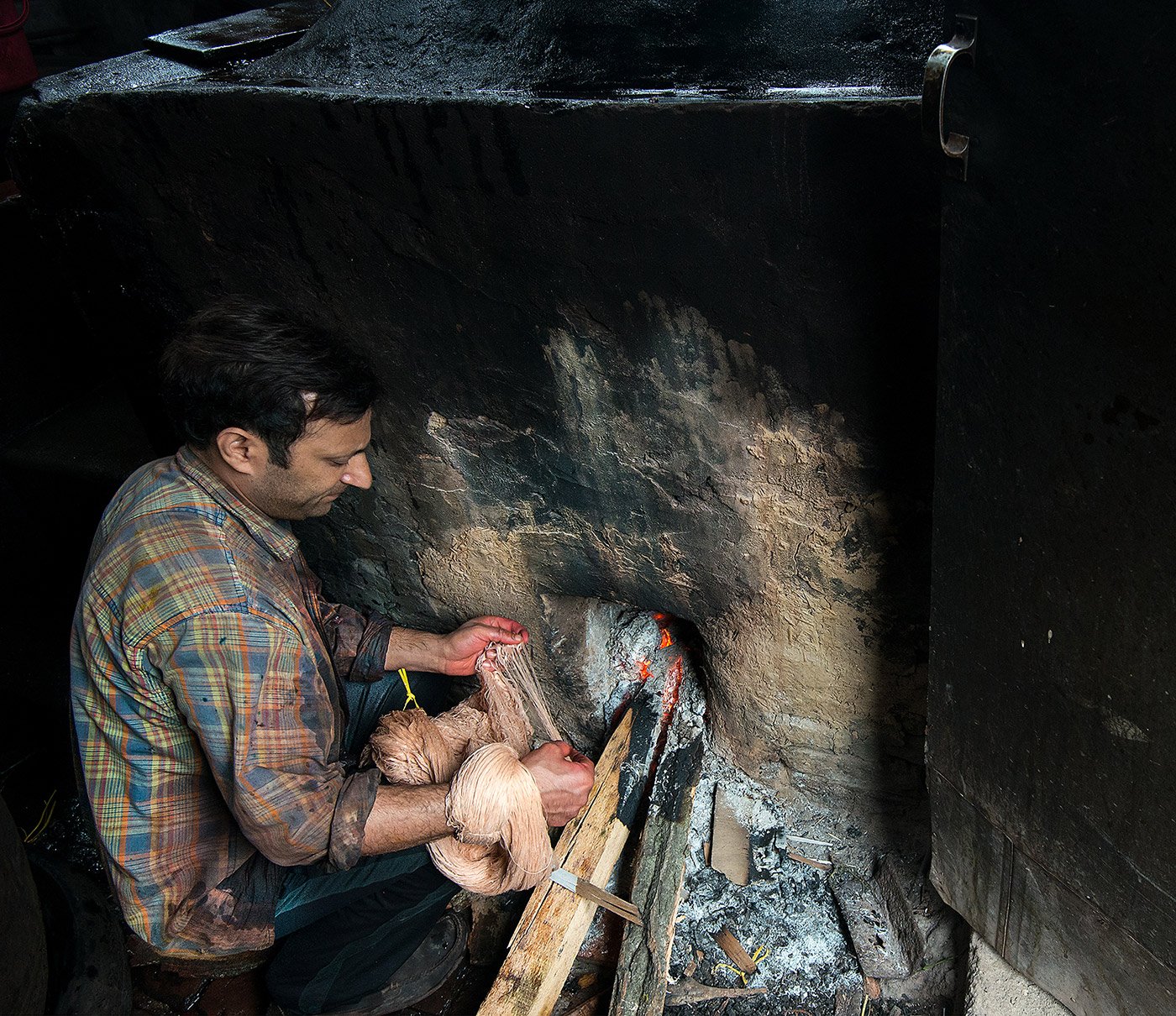
Finally, Naushad dries some strings of yarn in front of a fire to make sure they are the right shade. If the colour is off, he usually puts the yarns back in the water and mixes a little more coloured powder and bleach. The whole process is manual and based on estimates born out of long experience. It is repeated until father and son are both satisfied.
The original version of this photo essay appeared in print in ‘ Classic Imaging’ magazine in December 2016.
